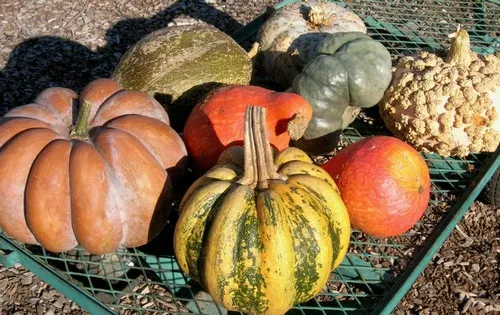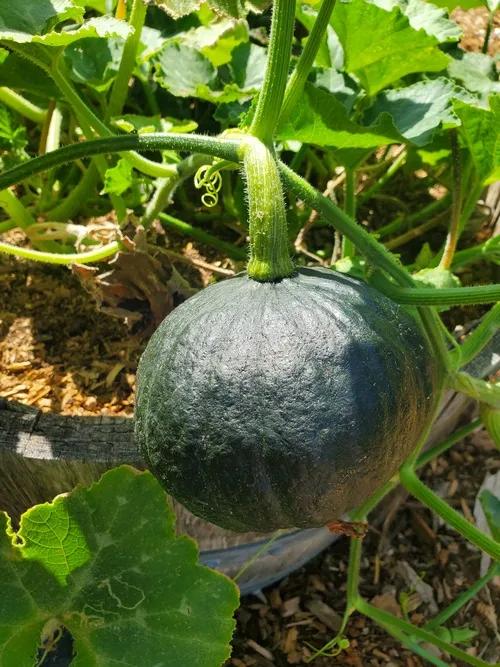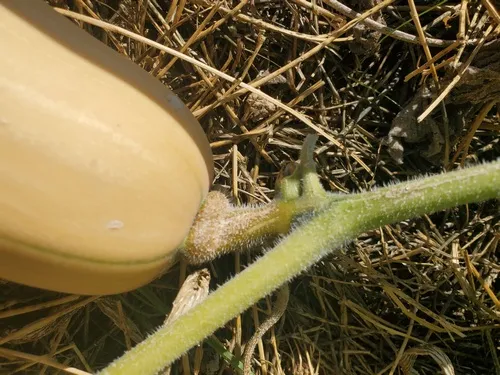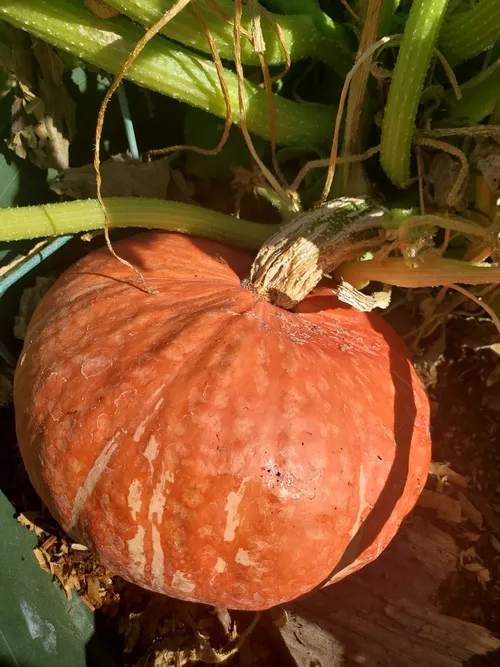Harvesting and Storing Winter Squash and Pumpkins

Did you know that all pumpkins are winter squash, but not all winter squash are pumpkins? It is a bit confusing, but as far as growing, harvesting, and storing goes, they are treated the same. They are genetically very similar, and belong to the same genus, Cucurbita. They come in a dizzying array of sizes, colors, and textures. Both are also warm-season vegetables, meaning that they are planted in the spring when the soil has warmed up and grow to maturity late in summer or early fall. Summer squash varieties are eaten when they are small and tender, but winter squash are left on the vine until they have grown to full size. The skin hardens as they mature, and because of this they keep very well without refrigeration. With most varieties the flavor and sweetness will also improve with time. Winter squash are normally stored and eaten later in the fall or winter… hence the name winter squash.
Is now the best time to harvest?
For optimal storage life and for the sweetest most delectable flavor, pumpkins and winter squash should be left on the vine until the fruit are fully mature. However, this varies depending on the type of squash. It can sometimes be difficult to know the optimal time to harvest. In winter squash, the color change is not always a good indicator of maturity. The most common advice that you may hear is to wait until the rinds are hard enough that they cannot be easily punctured by a fingernail. While this works for many types of squash and pumpkins, it does not work for all varieties. A better indicator of ripeness is the stem “corking.” This is the loss of green color and the development of brownish or tan, woody stripes on the stem where it attaches to the fruit.
The hybrid Kabocha squash in the first photo below is called Tetsukabuto. It will remain dark green, even when ready to harvest. The photo shows the typical green stem of a winter squash that is not mature, and not ready to be harvested. The second photo shows a butternut squash. They will start out light green when first developing, and then turn the distinctive tan color, but the color change does not mean they are completely mature. For best flavor wait until the stem is completely dry and corky looking with a brownish/tan color before harvesting. In the last photo is another Kabocha squash called Sunshine. It turns from green to orange long before it is ready to harvest. You will be much more pleased with the flavor of your squash if you wait to harvest until the stem has the brown, corky appearance as it does in this photo.



Photos courtesy of S. Hoyer
Harvest time and beyond…
Harvesting: Use a sharp knife or pruners to harvest your winter squash or pumpkins, and be sure to leave the stem attached—about 1 to 3 inches of stem is good. Avoid picking up your squash by the stem as this can cause it to break off. Without the stem, they do not store well. Also be sure to handle your squash carefully. Any damage or breaks in the skin can cause them to spoil in storage.
Curing: Most winter squash and pumpkins must be cured before storing. Don’t skip this step if you plan to store your squash to eat later in the year. Cure them in a dry place with good air circulation at temperatures between 80°F and 85°F for 7–14 days. Some options are to keep them on your patio or under a tree in the garden where they will not be wet down by the irrigation system. Another option is to leave them in the garden attached to the plant. Just be sure that they are not sitting on wet or damp ground, that there is no chance of either a critter chewing on them, or the temperature dropping below freezing. It is during the curing time that the skins of winter squash will continue to harden, and natural sugars will be concentrated. One exception to the curing rule is acorn squash. It can be eaten right away after harvest or stored for up to a few months.
Storing: Once your squash has completed the curing period, they can be stored in a dry, cool area. Store them in a single layer with a bit of space between each one for air circulation. The best temperature is between 50–60°F. A cool basement or garage can work well. Under ideal storage conditions, acorn squash can last up to 2 months, butternut 2–3 months, and kabocha or Hubbard 5–6 months. Under not-quite-ideal conditions, your squash may not keep the maximum period of time, but they can still keep for several weeks. Be sure to inspect your stored squash regularly for signs of spoilage. Most winter squash will survive the storage period in great shape, but occasionally there are some that succumb to rot pathogens and must be discarded.
For several weeks while they are curing and being stored, your pumpkins and winter squash will slowly convert starch to sugars. When harvested, cured, and stored properly, your winter squash will be a sweet and delicious addition to your fall and winter menus.
For more detailed information here is an excellent article from SDSU Extension Horticulture on harvesting and storing:
https://extension.sdstate.edu/harvesting-and-storing-pumpkins-and-winter-squash
Information on growing summer squash and winter squash from University of California Agriculture and Natural Resources:
https://ipm.ucanr.edu/home-and-landscape/cultural-tips-for-growing-squash/#gsc.tab=0
Help Desk of the UC Master Gardeners of Contra Costa County (SMH)
